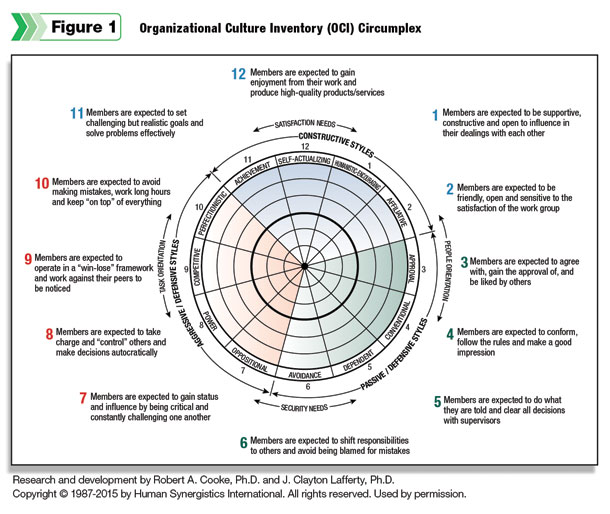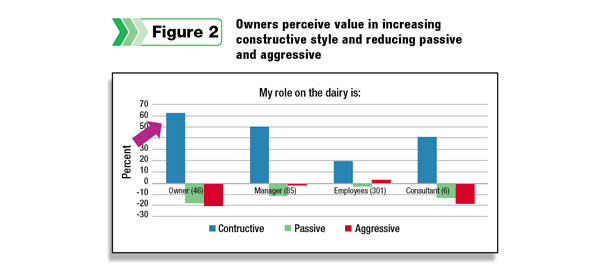Note: This is the second article in a series about dairy culture. All dairies have unique characteristics that support or detract from the operation’s productivity, efficiency and effectiveness. The key is to understand and then guide your dairy’s culture so the work gets done while personal team member growth is fostered and encouraged.
It’s one thing to know what culture is and quite another to assess and measure culture on individual operations. Although culture is an abstract concept, it can be measured with the right tools.
An objective assessment tool is available to delve into the behaviors and attitudes that impact a dairy’s culture to help understand it. Only once this data has been obtained can a dairy really begin to evaluate the impact of its culture and determine where improvements can or should be made.
Opportunity, not threat
Before delving into any data, however, it must be made clear: Dairy operations that explore their culture have to enter into the process with an open attitude. The information and feedback generated by a cultural assessment must be viewed as an opportunity by the dairy and its team.
Unlike other businesses, the operating cultures of dairies, as well as those of agricultural businesses in general, have not been studied in great depth. Nor has much been done to enhance the culture of dairy operations.
Dairies that decide to apply these tools to reveal their dairy culture find the process can take a good deal of energy to discover the operation’s constructive core.
For the process to be effective, owners and their teams must look for opportunities to improve a dairy’s culture rather than focus on its problems and allocate blame to others.
As you might expect, dairy operations that choose to explore their culture often find the perceptions of owners, managers and employees are very different.
The opportunities ultimately lie in defining the culture that will enable those who work on dairies to effectively deal with challenges and maximize productivity – and then take action to move the current culture toward that ideal.
Culture assessment
We are currently working with 28 herds (with more than 450 participants) undergoing this rigorous culture assessment process. It involves detailed, confidential individual surveys and group analysis under the guidance of an outside facilitator. The surveys are conducted online and are available in both English and Spanish.
The underlying leadership focus centers around the concept that the way you treat your employees is how your employees treat your customers.
On a dairy, who is the customer for most of the employees? Hopefully, the answer is, “our cows and calves.” The way owners, managers and peers treat each other is going to impact how the dairy’s animals are treated. And that treatment can have a significant impact on the productivity and profitability of the entire organization.
By understanding the dairy’s attitudes and behaviors toward its customers, the organization is able to gain insight into its culture, hopefully leading to improvements throughout the farm – from people to animals to productivity.
Culture assessment
The culture assessment in use in this process is the Organizational Culture Inventory (OCI) available from Human Synergistics International. The inventory measures 12 different behavioral norms, or styles of behavior, that might be expected of members of an organization (see Figure 1).
 The 12 styles represent three general, or types, of cultures.
The 12 styles represent three general, or types, of cultures.
Constructive cultural norms are at the top of the circumplex (shaded in blue) and involved “expectations for members to interact with people and approach tasks in ways that will help them to meet their higher-order needs for satisfaction and growth.”
Passive/defensive cultural norms are in the lower right of the circumplex (shaded in green) and involve “expectations for members to interact with people in ways that will not threaten their own security.”
Aggressive/defensive are in the lower left of the circumplex (shaded in red) and involve “expectations for members to approach tasks in forceful ways to promote their status and security.”
Participants are asked a series of questions that, when tabulated, give scores and ranking for each of the 12 pieces. Participants take two surveys: a current assessment of their existing culture and an assessment of the future ideal culture.
The gaps or differences between the current and existing cultures help to identify the dairy’s strengths and opportunities for development. Ultimately, the information helps dairy owners, managers and employees to consider the behaviors necessary for the effectiveness and long-term success of their business.
Additional questions in the survey measure readiness for change, role clarity and conflict, how employees value the services offered to their clients and employee satisfaction. Finally, demographic data is gathered on roles on the dairy, age, education level, tenure, ownership relationship and so forth.
Initial results
Tabulated data from the participating dairies show they wish to grow the constructive culture on dairies and lessen the passive and aggressive styles.
The differences between the current and ideal culture of the dairies was then broken down by role on the operation. These results are presented in Figure 2.
 It shows the change in styles by roles on dairies between the current culture and the ideal culture for all 28 dairies. The first set of bars include 46 owners. The second set of bars are for 85 managers. The third set of bars are for 301 employees. The last set of bars are for six consultants (nutritionists, veterinarians).
It shows the change in styles by roles on dairies between the current culture and the ideal culture for all 28 dairies. The first set of bars include 46 owners. The second set of bars are for 85 managers. The third set of bars are for 301 employees. The last set of bars are for six consultants (nutritionists, veterinarians).
The group of participating owners believe that norms and expectations for constructive behaviors (blue bar) need to be increased by 63 percent while norms for passive/defensive (green bar) and aggressive/defensive (red bar) behaviors need to be reduced by 19 percent and 21 percent, respectively, to maximize the productivity and long-term effectiveness of their dairies.
Specifically, owners believe that to maximize productivity and long-term effectiveness, those who work on their farms must:
- Understand the farm’s goals and processes and work toward achieving desired results (achievement)
- Actively build their skills and knowledge to achieve the goals and desired results (self-actualizing)
- Openly communicate with one another and actively develop one another’s knowledge and skills (humanistic-encouraging)
- Collaborate with one another for the purpose of achieving goals and results (affiliative)
Similar observations – although, to a lesser degree – were shared by managers and consultants. Likewise, employees wish to increase the constructive style but also ever so slightly increase the aggressive style and decrease the passive style.
Using the results
Producers who have participated in the first round of the program openly shared their data with fellow producers in sessions with a trained facilitator. This has resulted in powerful discussions on dairy human resource practices, procedures and overall leadership on dairies.
In the end, all producers formed immediate plans for next steps on their dairies to enhance their culture to help move the needle closer to the ideal culture survey results.
These plans are critical for success. What is the purpose of going through such an in-depth analysis without a plan for how to enhance the culture?
Productive and happy employees nurture productive and happy cows, and hence improved herd productivity; this is the benefit of a great dairy culture.
The next article will discuss in more detail assessment results and what they mean for the participating dairies, including real examples of how dairies have put results into practice. PD
Monty Miller is the owner of International Performance Solutions, a consulting practice that engages in training, development and organizational change. Neil Michael is global tech services manager with Arm & Hammer Animal Nutrition.
What enhances or detracts from a dairy’s culture?
It’s evident that there are several factors dairy owners, managers and employees agree make or break a dairy operation’s culture.
For example, the collective data from the 28 dairies participating in OCI assessment say these are the top four factors dairies need to grow and promote culture:
- Resolve conflict constructively*
- Treat people as more important than things
- Give positive rewards to others
- Use good human relations skills
And the top behaviors that drag down a dairy’s culture include:
- View work as more important than anything else*
- Personally run everything
- “Lay low” when things get tough
- Don’t “rock the boat”
*The 8 factors are statements from a survey used with the participating dairies called Organizational Culture Inventory by Robert A. Cooke and J. Clayton Lafferty, 1983, 1987, 1989, Plymouth, MI: Human Synergistics. Copyright © 1987, 1989 by Human Synergistics, Inc. Adapted by permission. The OCI items may not be reproduced without the express and written permission of Human Synergistics.
The first article (Your dairy's culture is more than yogurt or opera) discussed the definition of cultures and implications of culture on dairy farms.
The third article (Move culture in a positive direction) shared learnings from two dairies leveraging their OCI results, methods and outcomes.
The fourth article (Culture assessments: How to gain an accurate appraisal) discussed conducting a meaningful culture assessment takes time, focus and a sincere commitment to learn and grow – by dairy producers and dairy employees.
The fifth article (Case study: Culture in action during a tractor fire) helps us see what training and organization can do.





